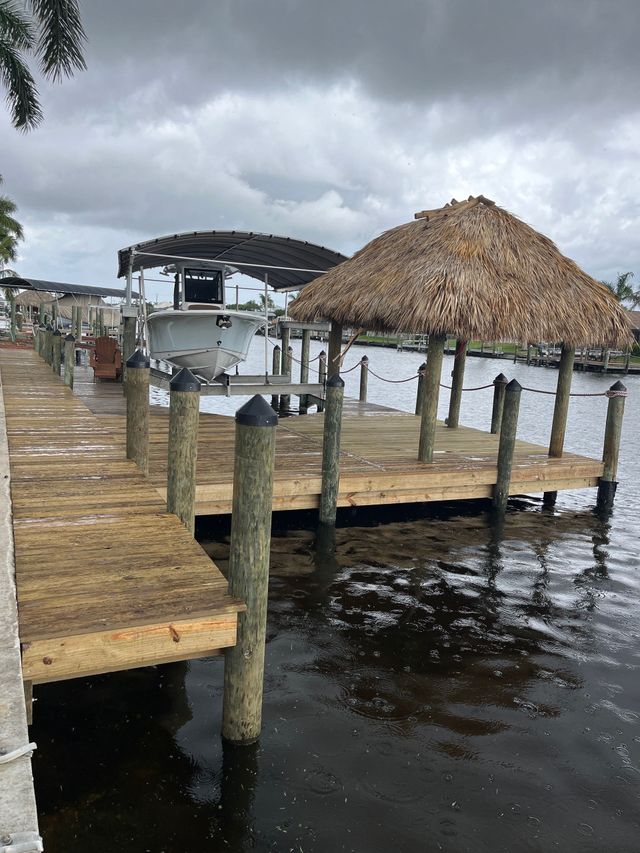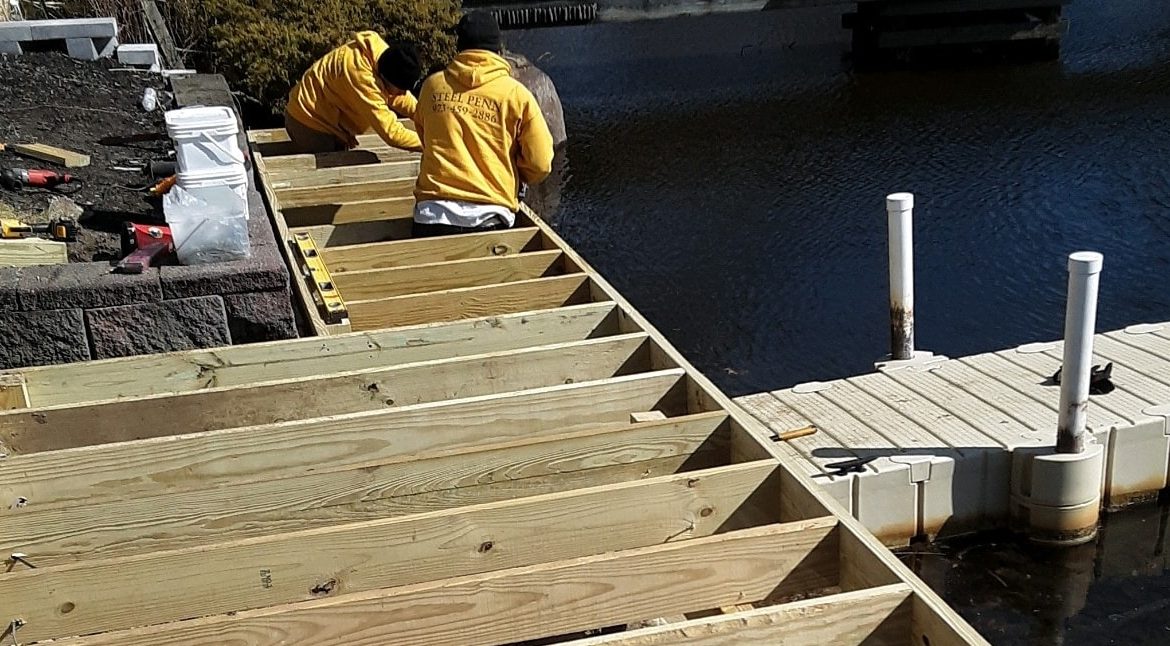Specialist Insights on Resilient Dock Repairs Solutions
Specialist Insights on Resilient Dock Repairs Solutions
Blog Article
How to Address Common Dock Repair Service Issues for Safe Water Tasks

Identifying Common Dock Issues
Recognizing common dock problems is critical for maintaining the capability and security of your waterside property. Normal examinations can assist uncover problems prior to they end up being serious, making sure both the durability of the dock and the safety of those that use it.
One more typical trouble is the deterioration of flotation protection devices. These gadgets are important for keeping the dock buoyant, and any kind of damage or punctures can trigger the dock to checklist or sink. On a regular basis looking for leakages or water logged floats can preempt extra substantial issues.
Furthermore, algae and barnacle build-up on the dock's surface can produce slippery and dangerous problems. This biofouling not only postures a threat to users however can also speed up the degeneration of the dock products.
Last but not least, examining for indications of rust on metal components is crucial. Corrosion can jeopardize the stability of the dock's framework, making it unsafe. By routinely recognizing these typical dock issues, you can make certain that your dock stays useful and safe and secure for several years to come.
Repairing Rotting Timber
When dealing with the issue of decaying wood on your dock, it is important to act quickly to protect against additional damage. Begin by extensively inspecting the whole framework to recognize all influenced locations. Use a screwdriver to probe the wood; if it sinks in conveniently, the wood is likely rotted and needs instant attention.
Once determined, get rid of the rotted sections utilizing a saw or chisel. Make certain to cut down to healthy and balanced, solid timber, guaranteeing you eliminate all compromised product. After elimination, deal with the remaining timber with a wood preservative to stop future rot. This therapy will aid safeguard versus moisture, which is the main reason of wood degeneration.
Following, change the removed sections with marine-grade lumber or pressure-treated timber, which are a lot more immune to water damages. Protect the new pieces with stainless-steel or galvanized bolts to avoid corrosion. In addition, using a water-proof sealant to the new wood can offer an added layer of protection.
Protecting Loosened Boards
How do you guarantee your dock remains useful and risk-free for all its individuals? One essential element is safeguarding loose boards, which can otherwise position substantial threats. Loose boards not just enhance the risk of tripping however can additionally compromise the architectural stability of the whole dock.

For reinstallation, utilize stainless or galvanized steel visite site screws, as these view it now materials supply premium resistance to corrosion in marine atmospheres. Guarantee the screws are long enough to pass through deep right into the underlying assistance structure, but not so long that they stick out with the dock's surface. Pre-drilling pilot holes can help avoid the timber from splitting.
Lastly, keep a normal assessment routine to determine and deal with any kind of new concerns without delay. By protecting loosened boards effectively, you add to the total security and longevity of your dock, making it a trusted system for water activities.
Stabilizing Unstable Pilings
Making sure the security of unstable pilings is vital to maintaining a functional and secure dock. Use a degree to check for vertical alignment and ensure they are driven deep sufficient into the substrate to provide appropriate assistance.
If the pilings are found to why not try this out be unsteady, one effective method for support is making use of additional bracing. Cross-bracing with dealt with lumber or galvanized steel can substantially enhance stability. Support the braces securely to both the pilings and the dock structure to disperse lots evenly.

Normal maintenance and periodic review of the pilings' stability are essential to guaranteeing long-term dock safety and security and performance.
Replacing Rusty Hardware
Addressing unstable pilings is simply one facet of preserving a dock's stability; another important worry is changing rusty equipment. Gradually, exposure to wetness and salt can result in the oxidation and rust of braces, bolts, and screws, jeopardizing the entire framework's safety. Routine evaluation for corrosion is important, specifically after severe climate or seasonal changes.
When rustic equipment is determined, prompt action is needed. Begin by picking marine-grade stainless steel or galvanized equipment, both made to resist the rough marine setting. Ensure that you have the proper devices, such as wrenches and screwdrivers, to securely get rid of the old, rusty pieces without creating more damage to the dock.
After eliminating the corroded equipment, thoroughly clean the influenced locations to eliminate any residual corrosion or particles. Apply a rust-inhibiting guide to exposed metal surfaces before setting up the brand-new equipment. Tighten up all fixtures securely to avoid future helping to loosen, and occasionally inspect the fittings to make sure continuous security.
Changing rusty hardware not only expands the dock's life-span but also significantly improves the safety of water tasks. By proactively managing deterioration, you secure both the structure and its users, ensuring a safe and secure and satisfying beachfront experience.
Verdict
Normal assessments and upkeep are important to resolve usual dock repair issues and ensure safe water activities. By determining and treating problems such as rotting wood, loosened boards, unstable pilings, and rustic hardware, structural stability and longevity can be significantly enhanced. The application of marine-grade materials and suitable treatments further fortifies the dock against environmental stress factors. Such positive steps contribute to the total security and functionality of dock frameworks, promoting a protected environment for water-based tasks.
Guaranteeing the safety and security of water activities pivots substantially on the proper upkeep and repair of docks (Dock Repairs). These tools are vital for maintaining the dock resilient, and any damages or slits can cause the dock to listing or sink. By consistently identifying these typical dock concerns, you can ensure that your dock stays secure and functional for years to come
Making sure the security of unsteady pilings is vital to maintaining a functional and safe dock.Normal examinations and maintenance are essential to resolve usual dock fixing issues and guarantee risk-free water tasks.
Report this page